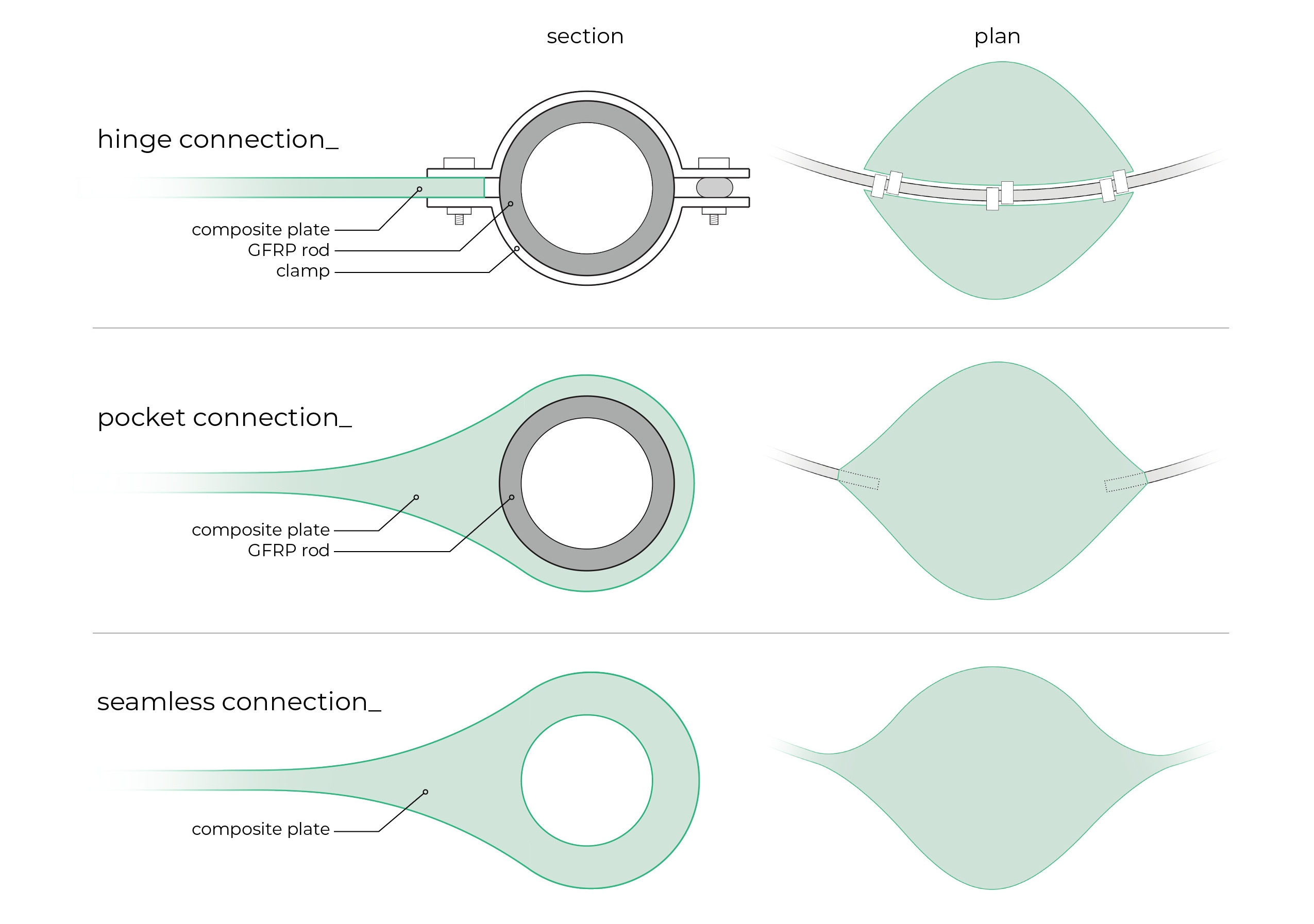
2018 ITECH Pavilion
What
Where
When
For
With
Where
When
For
With
Pavilion
Stuttgart, Germany
2017
ITECH Studio
Bradley Elsbury
Rasha Alshami
Mathias Maierhofer
and 12 other ITECH peers
Stuttgart, Germany
2017
ITECH Studio
Bradley Elsbury
Rasha Alshami
Mathias Maierhofer
and 12 other ITECH peers
The Integrative Technologies & Architectural Design Research M.Sc.
Program (ITECH) is an interdisciplinary, research-oriented,
experiment-based program shaped around contemporary aspects of the
built environment and practice. The objective of the research when I arrived for a freemover semester at the University of Stuttgart was to develop a deployable component-based composite system that utilizes simple compliant mechanisms and robotic actuation to alter its geometrical or topological configuration locally or globally towards a performative goal or state. To tackle this complicated objective, the studio splits into five teams: Design, Computation, Robotics, Structure, and Materials. I elected in the Design and Material groups to investigate the opportunities and limiataions of our chosen material on the design as it scales up from a schematic desk model to a full-scale pavilion.
Schematic Design
A bending-active system was chosed as a structurally efficient means to create space while conserving material and weight, theoretically reducing the work necessary of a robotic actuator. Designs began with simple rods to see what sort of geometries we could accomplish with compressive forces. A loop was the starting point so that the rod could be self-contained and not require any auxillary structures for stabilization. A geometry was found by pinching the rod in on itself twice with each contact point simulating a robotic node that can slide either connecting rod side-to-side. This simple geometry and actuation system results in a vast potential for states.













Material Research
Enclosure would be achieved through the use of membrane as the tensile reciprocal to the compressive forces of the rods. Previous schematic explorations also speculated about the potential for the compressive elements to be glass fiber plates rather than rods. With the potential for plates to offer density/bending gradients as an expanded research topic, we proceeded to develop a workflow for producing a large-scale
glass fiber reinforced
module that would be suspended in the pavilion.
Material Research
Enclosure would be achieved through the use of membrane as the tensile reciprocal to the compressive forces of the rods. Previous schematic explorations also speculated about the potential for the compressive elements to be glass fiber plates rather than rods. With the potential for plates to offer density/bending gradients as an expanded research topic, we proceeded to develop a workflow for producing a large-scale
glass fiber reinforced
module that would be suspended in the pavilion.



